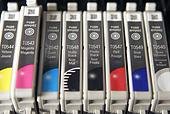When thinking about your local office products dealership versus a giant manufacturer, they are often first perceived like David going up against the behemoth Goliath that sells office equipment direct to the public. Dealer/suppliers, much like David, are smaller infrastructures than their larger competitor, and thankfully, this is a great advantage that translates into superior speed and agility when responding to requests for fast customer service!
Unlike the giants that make and in some cases sell their copiers, multifunction and other office products direct, your local community dealer won't try to impress customers with their size. Instead, they will typically bend over backwards to provide first-rate customer service. After all, they have a personal interest in ensuring fast turnaround and excellent service—their livelihood depends on it.
But that’s just one of the reasons why you may want to buy from a dealer versus the manufacturer. Dealers have brand flexibility and can represent more than one brand of products. This enables them to recommend products and solutions that most closely meet a company’s real business needs, pricing and corporate objectives. They also maintain relationships with multiple software providers. And since they’re not in the business of developing software, they’re free of any natural bias towards their own products. An independent dealer/supplier is going to take special care to find the kinds of systems that best serve you.
A dealer/supplier can also guide you through the thorny leasing process and even manage your lease agreement if that is your preference over purchasing. This ensures that your business doesn’t incur any of the penalties and fees which are part and parcel of the leasing business model. Partnering with someone that is experienced in the leasing game can mean the difference between saving and losing money on the deal.
Some dealer/suppliers serve as single-source solution providers that can streamline your business processes and ensure maximum efficiency and accountability. Why spend valuable time and resources coordinating several or more vendors when a single supplier may be able to provide a range of services? Imagine having one vendor provide services such as:
• Document imaging including document preparation/re-assembly and image indexing and verification
• IT services from network design and installation to desktop applications• Facilities management including copy and mailroom management
When you purchase office equipment from a local supplier, you’re buying from someone right in your backyard. You know where to find them and they’re directly accountable to you. Then there’s the human factor. A local dealer is a solid member of the community, and many dealers believe in giving back to their local region by supporting worthy causes, running the gamut from assisting in civic events to charitable donations to college endowment funds. They invest in the needs and people of their community, only some of which are customers.

 Printing colored pictures on a home computer consumes the maximum amount of ink.
Printing colored pictures on a home computer consumes the maximum amount of ink.